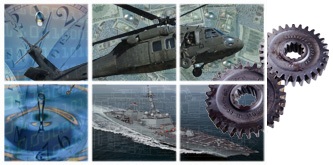The AWSM™ technology represents a new paradigm for ship manufacturing that redesigns manufacturing processes and uses computing and wireless technologies to deliver information–activity statuses, resource availability, design and scheduling changes–to every user, work crew, or process involved in the project.
A central challenge in any large-scale manufacturing environment is to effectively adjust to production and procurement glitches that ripple across and continually threaten manufacturing schedules. The ship manufacturing industry is no exception. With manufacturing projects that stretch over years and involve numerous divisions, materials, facilities, and manpower, how can U.S. shipyards achieve the kind of proactive flexibility needed to develop and maintain the most efficient and cost-effective production schedules?

